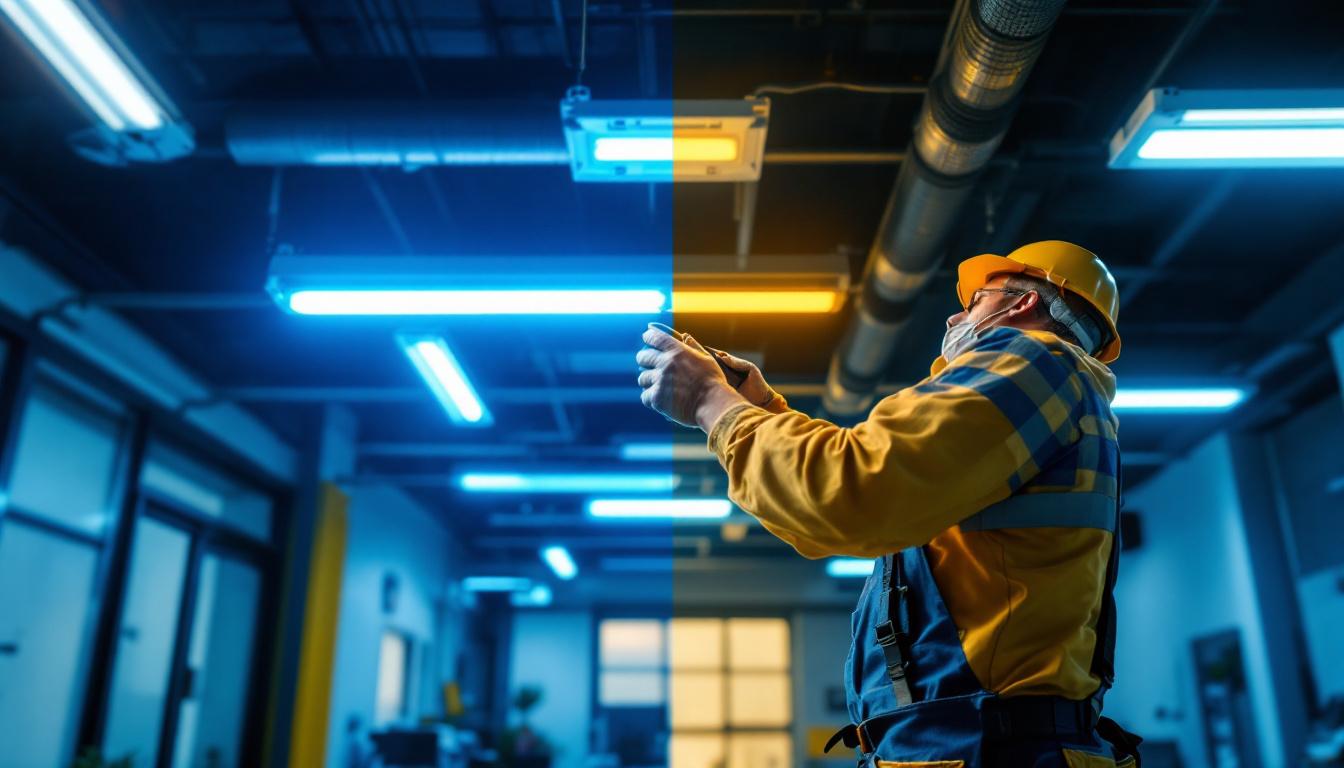
In the realm of automotive lighting, parking lamps play a crucial role in enhancing vehicle visibility and safety. For lighting contractors, understanding the intricacies of parking lamps can lead to better installations and satisfied clients. This article delves into essential advice for lighting contractors, focusing on the specifications, installation techniques, and maintenance of parking lamps in cars.
Parking lamps, often referred to as sidelights or position lights, are designed to illuminate the area around a parked vehicle. They serve multiple purposes, including increasing visibility during low-light conditions and signaling the presence of a stationary vehicle to other drivers. In addition to enhancing safety, parking lamps can also contribute to the aesthetic appeal of a vehicle, with many modern designs incorporating stylish lighting elements that complement the overall look of the car.
There are various types of parking lamps available, each with its unique characteristics. The most common types include incandescent, halogen, and LED lamps. Understanding these types helps contractors recommend the best option for their clients. Beyond these standard categories, there are also variations like xenon and adaptive lighting systems that adjust the brightness based on environmental conditions, providing even greater flexibility and functionality.
Incandescent lamps are traditional and provide a warm glow, but they are less energy-efficient and have a shorter lifespan compared to modern alternatives. Halogen lamps, a type of incandescent, offer brighter light output and improved efficiency. However, LED lamps have become the go-to choice for many due to their longevity, energy efficiency, and lower heat emission. The advancements in LED technology have also led to the development of customizable color options, allowing vehicle owners to personalize their lighting to match their style or enhance visibility in specific conditions.
Lighting contractors must be aware of the regulatory standards governing parking lamps. These regulations ensure that the lamps meet specific brightness levels and visibility requirements. Familiarity with local and national regulations can help contractors avoid legal issues and ensure client satisfaction. Additionally, these standards can vary significantly by region, making it essential for contractors to stay updated on the latest changes and trends in automotive lighting regulations.
For instance, parking lamps must be visible from a certain distance and must emit a specific color of light, typically amber or white. Understanding these standards can guide contractors in selecting appropriate products and ensuring compliance during installation. Furthermore, as vehicle technology continues to evolve, regulations are also adapting to address new innovations, such as automatic lighting systems that activate based on ambient light conditions. This ongoing evolution highlights the importance of continuous education and adaptability for professionals in the lighting industry, ensuring they can provide the best solutions for their clients while adhering to the latest safety standards.
Proper installation of parking lamps is essential for optimal performance. Lighting contractors should follow best practices to ensure that the lamps function correctly and provide the necessary visibility. This not only enhances safety for the driver and pedestrians but also contributes to the overall aesthetic appeal of the vehicle, making it an important aspect of automotive maintenance.
Before beginning the installation process, contractors should gather all necessary tools and materials. Common tools include screwdrivers, pliers, wire strippers, and electrical tape. Additionally, having a multimeter on hand can help troubleshoot electrical issues during installation. It’s also beneficial to have a work light or portable lamp to illuminate the workspace, especially when working in dimly lit garages or outdoor settings during the evening.
Preparation also involves assessing the vehicle’s existing lighting system. Contractors should inspect the wiring and connectors to ensure they are in good condition. Any damaged components should be replaced before proceeding with the installation of new parking lamps. Furthermore, it’s advisable to consult the vehicle’s manual for specific wiring diagrams and installation instructions, as different models may have unique requirements. This step can save time and prevent potential errors during the installation process.
Wiring is a critical aspect of parking lamp installation. Contractors must ensure that the wiring is correctly connected to the vehicle’s electrical system. This typically involves connecting the positive and negative wires from the parking lamp to the corresponding wires in the vehicle. Attention to detail is crucial here, as improper connections can lead to malfunctioning lights or even electrical fires.
Using heat-shrink connectors and soldering can provide a more secure connection, reducing the risk of electrical failures. Additionally, contractors should ensure that all wiring is properly insulated to prevent short circuits and other electrical issues. It’s also important to route the wires away from any moving parts or areas that may generate excessive heat, as this can compromise the integrity of the wiring over time. To further enhance durability, contractors may consider using protective conduit or loom to shield the wires from abrasion and environmental factors, ensuring a longer lifespan for the installation.
Regular maintenance of parking lamps is vital to ensure their longevity and effectiveness. Lighting contractors can offer valuable advice to clients on how to care for their parking lamps.
Encouraging clients to conduct routine inspections of their parking lamps can help identify issues before they become significant problems. Clients should check for any signs of damage, such as cracks in the lens or burnt-out bulbs. Regularly inspecting the wiring for wear and tear is equally important.
During these inspections, clients should also clean the lamp lenses to remove dirt and grime, which can diminish light output. A simple cleaning solution and a soft cloth can restore clarity and improve visibility. Additionally, clients should pay attention to the alignment of the lamps; misaligned fixtures can lead to uneven lighting, creating dark spots that may pose safety hazards in parking areas.
Over time, bulbs may burn out and require replacement. Contractors should educate clients on how to identify when a bulb needs to be replaced and the steps involved in doing so. This includes turning off the vehicle, accessing the parking lamp assembly, and replacing the bulb with a new one.
It’s essential to remind clients to use the correct type of bulb as specified by the vehicle manufacturer. Using the wrong bulb can lead to electrical issues or inadequate lighting performance. Furthermore, clients should be informed about the benefits of upgrading to energy-efficient LED bulbs, which not only last longer but also consume less power, ultimately reducing energy costs and environmental impact.
In addition to bulb replacement, clients should be aware of the importance of checking the lamp housing for any signs of corrosion or rust, especially in areas with harsh weather conditions. Addressing these issues promptly can prevent further damage and ensure that the parking lamps continue to function optimally for years to come.
When it comes to parking lamps, selecting the right products is crucial for ensuring quality installations. Lighting contractors should consider various factors when recommending products to clients.
While it may be tempting to opt for cheaper products, investing in high-quality parking lamps can save clients money in the long run. Quality products typically offer better performance, longer lifespans, and reduced maintenance needs.
Contractors should educate clients on the benefits of choosing reputable brands known for their reliability and performance. This can help clients make informed decisions and avoid frequent replacements or repairs.
Not all parking lamps are compatible with every vehicle model. Contractors must ensure that the products they recommend are suitable for the specific make and model of the client’s vehicle. This may involve consulting product specifications or manufacturer guidelines.
Additionally, being knowledgeable about aftermarket options can provide clients with more choices, particularly for those looking to upgrade or customize their vehicle’s lighting system.
The automotive lighting industry is constantly evolving, with new technologies and trends emerging regularly. Staying updated on these trends can help lighting contractors offer the best solutions to their clients.
LED technology continues to dominate the automotive lighting market due to its numerous advantages. LED parking lamps are not only energy-efficient but also provide brighter illumination, enhancing visibility for both the driver and other road users.
Moreover, the compact size of LED bulbs allows for more versatile design options, enabling manufacturers to create sleek and modern lighting solutions. Contractors should encourage clients to consider LED options for their parking lamps as part of a broader lighting upgrade.
Another trend gaining traction is the integration of smart lighting solutions in vehicles. These systems can adjust brightness based on ambient light conditions or even communicate with other vehicles to enhance safety.
Lighting contractors should familiarize themselves with these technologies and consider how they can incorporate them into their services. Offering smart lighting solutions can set contractors apart in a competitive market and appeal to tech-savvy clients.
Parking lamps are an essential component of vehicle lighting, contributing to safety and visibility on the road. For lighting contractors, understanding the various aspects of parking lamps—from types and installation techniques to maintenance and emerging trends—is vital for providing high-quality service to clients.
By staying informed and offering expert advice, contractors can enhance their reputation, foster client trust, and ultimately contribute to safer driving experiences. As the automotive lighting landscape continues to evolve, embracing new technologies and practices will ensure that contractors remain at the forefront of the industry.
Ready to elevate your lighting installations with the best in the business? At LumenWholesale, we provide lighting contractors like you with top-quality, spec-grade parking lamps and other lighting products at unbeatable wholesale prices. Say goodbye to local distributor markups and hello to our extensive selection that meets the highest industry standards. With free shipping on bulk orders, you can stock up on reliable, high-performance lighting without any hidden fees. Make your next automotive lighting project shine with the perfect blend of quality, affordability, and convenience. Discover the value that LumenWholesale brings to your work by visiting Wholesale Lighting at the Best Value today.

Discover innovative strategies from top lighting contractors for installing 4-inch LED recessed lights.

Discover how LED outdoor flood lights can significantly boost safety in your lighting installations.

Discover the transformative impact of converting T12 fluorescent lights to LED on lighting contractors’ projects.

Discover innovative ways to enhance your lighting solutions with the Switch Switch Light.